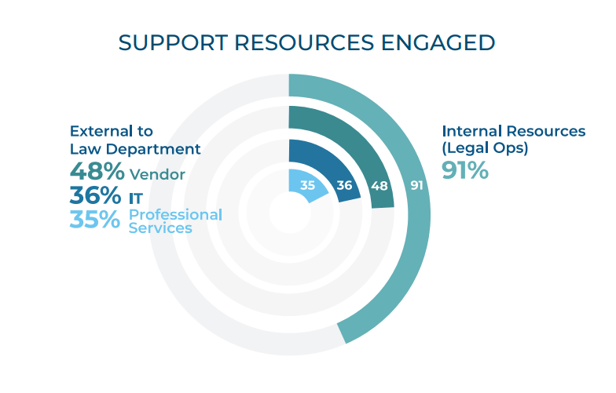.png)
Legal Departments are Embracing Workflow Automation
In-house law departments have long faced rising workloads while coping with budget pressures, as the demands on their teams often outstrip expansion of the function. These challenges, paired with rapid innovation in the legal tech market, are leading many to see technology as a much-needed ‘pressure relief valve’ driving enthusiasm and investment, particularly in the category of legal workflow automation (WFA) solutions.
While low/no code workflow technology has appeared in business process management (BPM) and other enterprise markets for some time, more recently some vendors are marketing a distinct set of workflow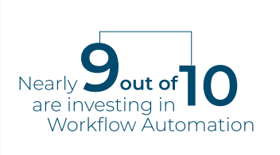 automation (WFA) solutions for the corporate legal market. Hyperion Research benchmarking data shows a significant wave of investment underway in this category. While 41% of respondents report their intention to acquire their first WFA tool in the next 12-18 months, more striking is the slim minority of respondents who are not pursuing WFA capabilities. Only 12% of respondents indicated they neither currently use nor have plans to acquire or upgrade these technologies.
automation (WFA) solutions for the corporate legal market. Hyperion Research benchmarking data shows a significant wave of investment underway in this category. While 41% of respondents report their intention to acquire their first WFA tool in the next 12-18 months, more striking is the slim minority of respondents who are not pursuing WFA capabilities. Only 12% of respondents indicated they neither currently use nor have plans to acquire or upgrade these technologies.
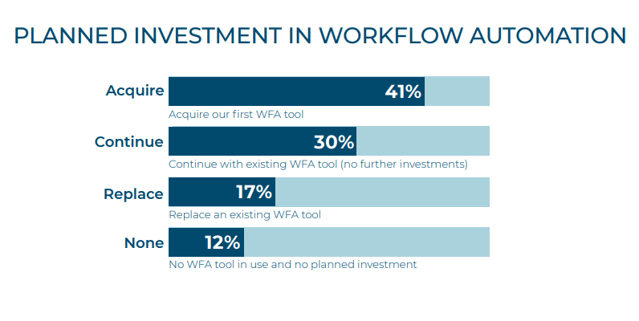
Forces Driving Corporate Legal Adoption of Legal Workflow Automation Tools
While motivations vary, our in-depth research with users of WFA technology in corporate legal departments revealed a range of benefits associated with these solutions, from managing rising workloads and budget scrutiny to alleviating concerns with risk management while controlling their own destiny by obtaining tools that require little or no IT support.





In keeping with growing trends toward business-led IT initiatives across other corporate functions, in-house legal departments have both motive and opportunity to take control of their digitization initiatives using relatively inexpensive and easy-to-use workflow automation solutions. When asked to indicate the most important benefit they receive (or anticipate), our data show that users and buyers of WFA rank their ability to easily automate processes highest, followed by sizable numbers that prioritize easy administration, flexibility, and affordability.
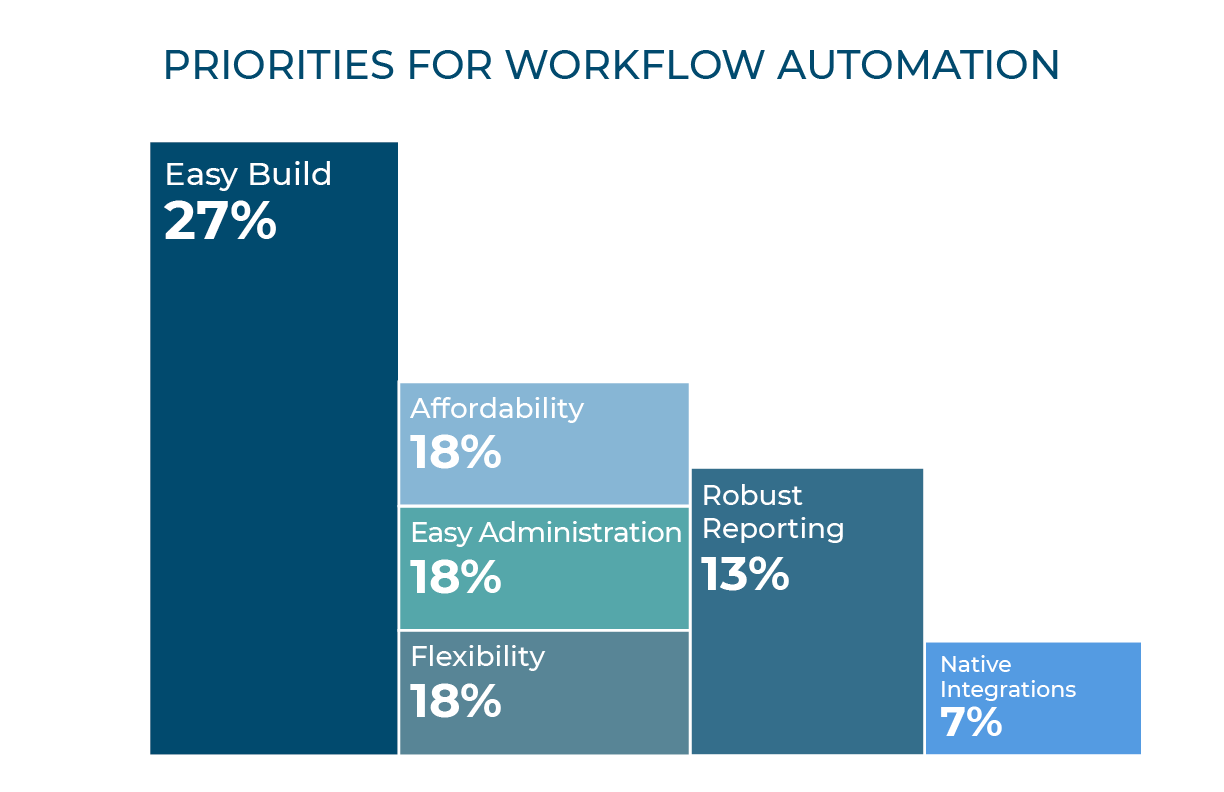
The ease of building, administering, and adjusting these solutions enables most corporate law departments to undertake at least some work themselves. Our data shows that in over 90% of legal departments, Legal Ops staff build and manage the workflows – double the rate at which teams use supplemental support from vendor support, IT, or professional services. Moreover, as typical “owners” of the WFA solution, Legal Ops staff often not only take on primary responsibility for building applications and administering the solution, but also provide training and drive awareness and adoption of workflow automation.
After implementing WFA solutions, legal ops professionals often become evangelists beyond their own organizations. Widespread sharing of workflow automation success stories helps drive investments by providing social proof for the benefit of and need for WFAs. Further proof is provided by functional counterparts (e.g., Finance, HR, IT) making use of other automation techniques, spurring internal department interest (and, occasionally, C-suite expectations for digitalization within Legal). Moreover, the buzz surrounding the potential of Generative AI is drawing attention to the benefits that WFA solutions already provide, which are rapidly expanding as providers begin harnessing the large language models that are adjacent to their products’ inherent AI-driven capabilities.
Vendors are Propelling the Movement
As a macro trend, vendors in this category are lowering the barriers to entry by making their offerings easier to use (no code) and more accessible (low cost). Some are also offering solutions that can scale up to larger portfolios of more sophisticated applications through their low-code orchestration capabilities. They are also generating goodwill with customers.
Our data show that 62% of respondents who have implemented WFA tools are satisfied or very satisfied, with only about 1 in 20 reporting dissatisfaction. The warm reception to WFA stands in contrast to some other technology types like contract lifecycle management where just over a third of users (35%) reported satisfaction with their solution, per our survey in 2022. 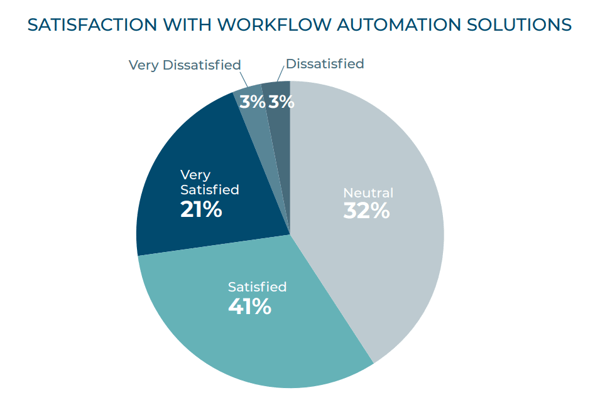
Also notable is the nearly one-third of respondents who are neither satisfied nor dissatisfied. This data, along with interviews with over 40 WFA customers, suggests a risk in getting carried away with the technology and related opportunities.
As we will discuss in our next Insights post, customers tend to quickly ramp up to large numbers of automated processes; however, some struggle to manage and maintain those automations as staff come and go. Automating workflows is beguiling and requires more planning, oversight, and discipline than many initially realize.
As this series continues, we discuss rapidly expanding use cases for Workflow Automation, current and future market trends, and provide guidance for steering a WFA journey.


